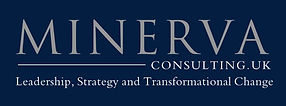
Organizational Design: Structural Agility
Is your organization designed to enable people to execute strategy; do you have an agile approach to structure to enable rapid re-configuration, cross-boundary and virtual teamworking?
"Initially I was sceptical about this ‘discipline’ —I thought it would make us rigid and inflexible. Instead it has been liberating.” Bank Division COO.
"All the accountability and no authority is the biggest single source of our work stress related payouts" Insurance company director
Organizational structures are effectively decision-making systems for breaking ‘the big task’ into smaller component sub-tasks to be achieved; and those smaller tasks increasingly demand effective cross-boundary collaboration both within and across organizations.
Aggregating the achievement of those smaller tasks demonstrates to what extent ‘the big task’ (‘the vision’) has been realised.
Structure can help or hinder how decisions are informed and made, how co-ordination and collaboration are enabled and ultimately how engaged people are. Structure provides the central nervous system through which information flows, direction is provided, tasks and resources are allocated, vertical and lateral authorities are delegated and accountability made both fair and possible.
So well-designed hierarchy has a purpose and is not inherently wrong; how it is designed is where the problem lies. Both overly hierarchical, bureaucratic structures and overly flat structures inhibit decision-making and effective communication but for different reasons.
All effective organizations have a form of matrix structure, but ineffective matrices provide little definition of role-relationships and no real alignment of accountability and authority in both the vertical sense (essentially decision-making and delegation authority), and the lateral sense (informing or being informed, delaying, auditing, having access, receiving service and so on). Individual roles are too often lists of things to do rather than the purpose they exist to fulfil (so what is done may change). The absence of role-relationship clarity usually results in gaps or duplication in assumed roles as people are influenced by performance management systems, corporate politics and feelings of insecurity to make ‘the system’ work to their best advantage. 'Un-clarity' usually results in avoidable and unnecessary conflict, stress and exhaustion (the day is for meetings about meetings attended by all and sundry, the evening is for doing the job).
Unclear matrices allow ineffective leaders to hide and accelerates the burn-out of good leaders who have not been set up for success by those responsible for organization design. Given the increasingly 'project based' nature of work spanning multiple teams and crossing internal and external boundaries; organizations need an agile and common approach to organization structure and individual role design – a system based on principles which may be applied in the forming stage of teams as new groupings are created and new tasks undertaken.

Good organizational design enables both ‘collective leadership capability’ and individual leadership, and results in increased productivity, faster decisions, shorter cycle times, increased innovation and adoption, and increased retention of talent.
It also cuts costs by eliminating duplication and wasted effort and resources. It does not allow people to hide nor ‘politicians’ who ‘manage upwards’ to claim others’ credit. It removes the stress of ‘all the accountability and no authority’ and influences behaviour to drive results.
When the principles of organizational design are learned by leaders as part of their leadership development, then the capability of the organization to continue to apply them as it evolves to face new challenges can be embedded; design remains optimal.
"This major organization design, development and culture change programme was the subject of a full academic research project which proved its success and a significant return on investment.” Business Unit General manager
Let's talk about an agile approach to organization structure and the criteria that its underlying principles should meet.